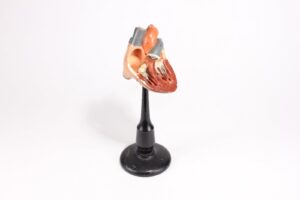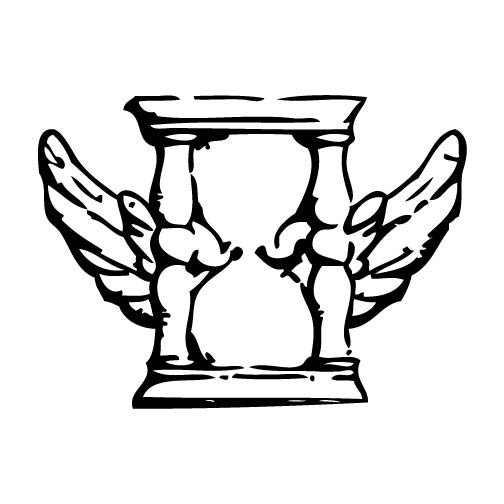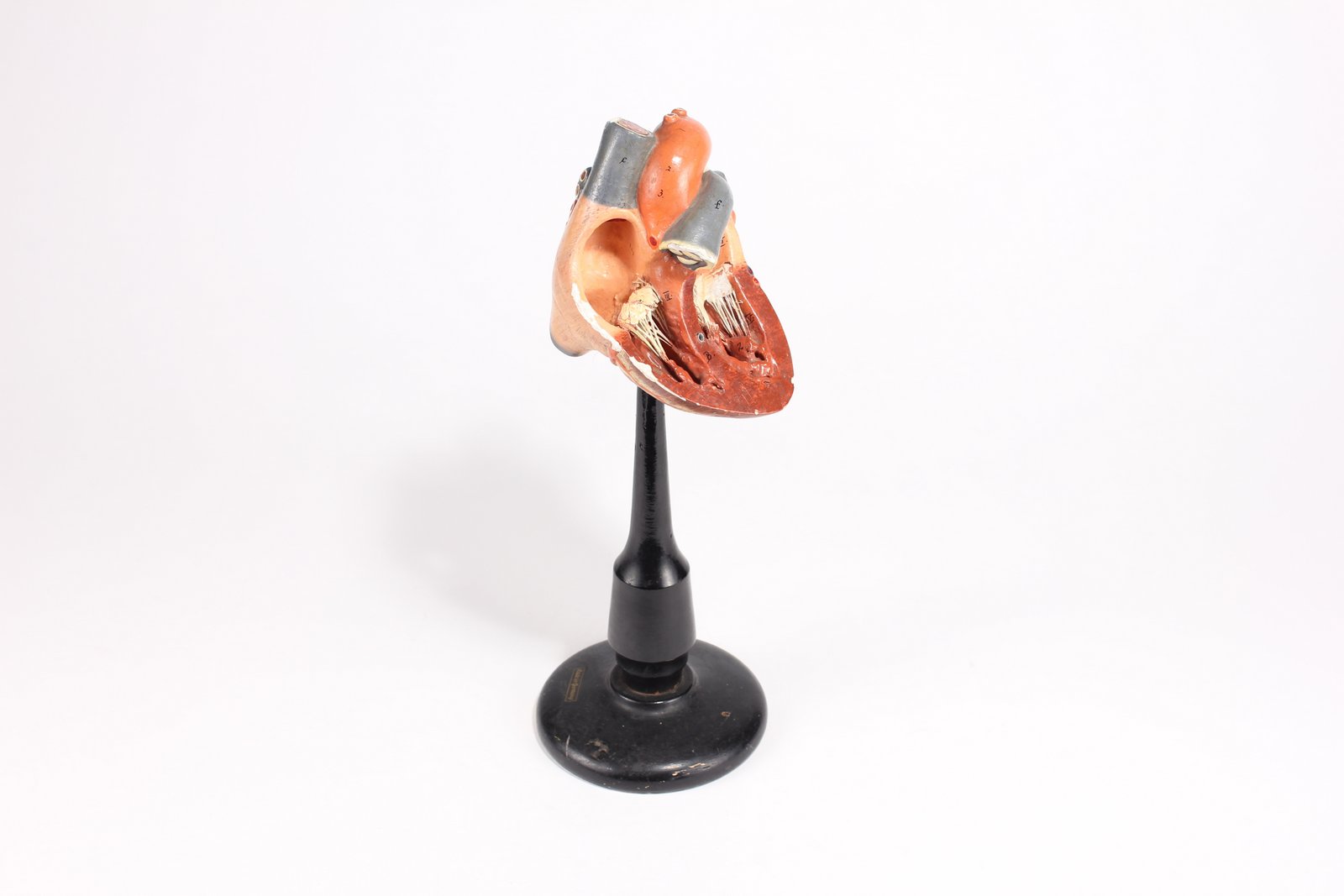Provenance Prize Winners, Spring ’14

It is with great pleasure that we announce the winners of the Provenance Prize literary contest sponsored by Old as Adam and Book & Bar. We had dozens of stellar submissions and it was a privilege to read the work of the talented writers who participated. Our panel of judges selected three finalists and the public voted to decide the winner. The subject was a plaster heart medical model. Learn more about Provenance here.
First Place
Das Herz
By Tammi J. Truax
——–Brigitta felt and looked like a silly, but properly pretty, bird, right up to the elaborate plumed hat she carefully balanced upon her stylish pompadour. She was perched on the edge of a dark velvet settee in the parlor of her parent’s home in a haughty neighborhood of Heidelberg. She had already donned her hat and tailleur, so it would be apparent that she was ready to go to the university with him. Her parasol rested upon her knees, and she focused on keeping it balanced there without movement or sound. Though sitting still was not easy for a nervous girl (this is what her father called her) of sixteen years, she knew her behavior must be impeccable. On this day she secretly conceded that she was nervous, this day meant so very much to her. It was now possible that she could attend lectures at the university as an auditor, and nothing meant more to her than being allowed through those heavy hand-carved doors she had never seen the inside of. She struggled between knowing she must not interrupt her father in his studies, and her need to be noticed by him. He was leaning into the light, making last minute adjustments to his notes for his lecture to his medical students and learned guests to be delivered in the science theatre that afternoon. Her father’s students, young men all. Many who knew, and cared, less than her of the human body and its biological weaknesses.
——–She waited for a pause, …, might he look up and acknowledge her, allow her to speak, that she might tell him she had been studying his bisected heart model for weeks and knew every part of it and could explain the function of each without notes. She waited for the better part of an hour. He did not look up, though his hand lovingly stroked the beautiful sculpture on a stick that was the object of passion for both the man and his passed-over prodigy. When the old Bavarian cuckoo clock announced the hour, he rose, collected his papers, and exited the apartment without a word. Turning in her seat just enough to watch him through the window, she saw the heart model tucked under his arm, just where her gloved hand should be as she strolled beside him.
——–In the silence she sat in, she heard the crushing sound of his boots upon the gravel outside. His stride was brisk and he was soon out of her sight, which had anyway become clouded by the weepy heat of humiliation. Her father. Europe’s leading authority of the circulatory system, the human heart, and likely recipient of the next Nobel Prize in Medicine, knew nothing of what he left behind.
——–Bringing her delicate hand to her corseted chest Brigitta felt her heart breaking. It was, she was certain, a pain centered in the left ventricle. “The ventriculus sinister cordis,” she said softly in Latin, though there was no one there to hear her.
Second Place
The Mizpah Heart
By Zakariah Johnson
——–“Don’t go, Max,” said Ingrid. “It’s pointless.”
——–“Papa didn’t think so when he asked me.”
——–“Papa’s dead. Let it go.”
——–“I can’t. It’s the last thing he asked me and I swore to it.”
——–Dr. Reinhard Huber had never planned to give his son, Max—born during the Great War—an American name; he had not even realized he’d done it until after the family took first class berths from Bremerhaven to New York in 1927, after Germany had become intolerable. Then the Depression hit, and anything “first class” became just a memory for the family. But the doctor had believed Max—now his thoroughly American son—would be their salvation when the two would be doctors together and make something of the small practice he’d bought soon after arriving.
——–But in March 1939, a neglected bout of flu had put an end to Reinhard’s dreams only months before Max was due to get his license. Once the ground had thawed, Dr. Huber, beloved husband and father, had been laid to rest with his wife and his dreams in the Lutheran cemetery.
——–“You can’t go,” Ingrid insisted. “The Nazis are crazy. With what’s happened in Bohemia, you must see what’s coming?”
——–“You’re such a worrier,” Max said. “Why would anything be coming? I’ll take the ship to Italy, then the train north. I’ll get Papa’s papers in Hanover, some of the books from Uncle Rupert, and be home right after Easter.”
——–“But what if they need you? You’re a doctor now—they must need doctors. What if they keep you?”
——–“I’m not a doctor yet. And I’m an American citizen. How would they keep me?”
——–“I don’t know, Max. I don’t think Papa understood the risks when he asked.”
——–Max’s turned away from his older sister, exasperated. His eyes fell upon the wooden heart resting between the kerosene lantern and the Mason jar of change on his father’s roll-top desk. The hand-painted heart was a perfect model of the real thing. It was one of the many advanced medical devices Dr. Huber had brought with him during immigration that had set him apart from local practitioners, who often visited him for second opinions on their own diagnoses.
——–“Here,” Max said suddenly. He walked across the room and picked up the heart, and then turned to his sister. “You know the story of Mizpah, from the Bible?”
——–“Of course.”
——–“Then this will be our Mizpah covenant, ‘The Lord watch between us while we are apart one from another.’ What could be better than a heart?” Max pulled the pin holding the two halves of the model together and held out the larger piece and its support base to his sister. He tucked the loose piece into his coat. “You see? You have my heart—and my word. I’ll be back before the crocuses are gone.”
——–Sixty years later, when Ingrid’s granddaughter came to clear out her bedroom, the incomplete heart was still sitting on the old woman’s dresser.
Third Place
Untitled
By Anthony Conti
——–Throughout the industrial revolution Dusseldorf was known for its finely crafted and accurate (or believed to be accurate) plaster medical models. From skulls and full skeletal models to examples of the various organs none of the factories that dotted the Rhine could compare with the products made by the Schulz Company. The Schulz family and their employees had honed their craft for nearly eighty years when Johann Metterkelm began in the spring of 1913. Johann was a nineteen year old local with a sweetheart named Birgit and hopes of moving up in the factory his father, uncles, brothers, and sisters worked in. He began in the painting department where his sisters worked specializing in veins on livers.
——–That next year, as war broke out, Johann had been promoted; his work on Schulz’s plaster hearts being especially well regarded. He and Birgit were then engaged. And so it was with some regret that he enlisted in the German ranks leaving his happy life in that lovely city behind. Johann Metterkelm was lost at the Battle of Verdun on Oct. 19th 1916. Old man Schulz had known the Metterkelms for decades and took the loss nearly as hard as Johann’s family mourning openly at the funeral for all to witness. The head of the firm lovingly wrapped and stored the last model heart that Johann painted before leaving for the front as a momento of that promising young man.
——–In February 1923 Mr. Schulz passed away and his heirs mistook the keepsake in the old man’s office as misplaced stock. The model heart was sold as part of a shipment of models that arrived in New York City later that year. The models were kept in a warehouse to be shipped to various wholesalers and showrooms. This particular model was sent to W.P. Grant’s shop in Concord NH in 1925. Its workmanship being so fine, the model was kept on display for years until the shop closed in 1953 after Mr. Grant’s retirement. The heart was then donated, along with other models, and used in the Mr. Millbanke’s classroom at New Albion High School until it was given to that school’s drama club to be used as a prop for Dr. Frankenstein’s lab sometime in the late eighties. It was during its debut on stage that the model received its nicks and chips. After the damage had occurred, Mr. Millbanke allowed the drama club to keep what he then thought a dust collector. The heart was then stored away for a number of years until discovered backstage and put into a box destined for an indoor yard sale the drama club was putting on as a fundraiser for a trip to New York City. It was purchased by a certain well-known antique dealer who then brought it to his shop where you can see it displayed now.
More notable submissions on the spring subject to come…

